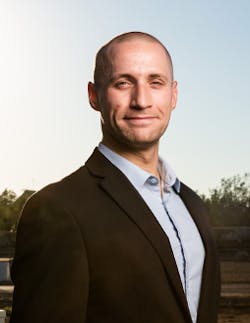Look around the current energy landscape and you’ll see clear evidence that now is the exact right time to build or strengthen your skills for a career in microgrid technology. Here’s why.
Today’s global distributed generation market is being driven by multiple factors: rising demand for electricity, declining solar energy and storage costs, rising national and international initiatives to control greenhouse gas emissions and increasing interest in resilience to climate change and natural disasters. This momentum translates into projected growth. According to Precedence Research, the global distributed generation market size was estimated at $263.35 billion in 2021 and is expected to reach over $703 billion by 2030, poised to grow at a notable CAGR of 11.5% from 2021 to 2030.
Thinking in terms of the economy as a whole, it’s reasonable to posit that regardless of what’s happening in the financial sector, the transition to alternative energy solutions such as microgrid technology isn’t going to stop – or even slow down. Add to that recent federal investments coupled with anticipated wage increases and you have compelling reasons to consider acquiring new skills in renewable energy.
The energy sector landscape is certainly going to change over the next 30 years. Why? Because it's going to take different types of technologies, innovations and people to get to 80% renewable energy and then on up from 80% to 100%. This, in turn, drives growth and new development.
Other factors are at play now, too. For one thing, in the light of climate change and increasing natural disasters, new solutions will be required to address grid outages and provide energy security. In addition, defense mandates at the national level and elsewhere around the world are requiring energy reliability and resilience.
The energy sector will always carry a strategic thread to grow business and foster career development, with the specific occupational focus changing over time as we continuously innovate and transition to new technologies. At the same time, it’s reasonable to predict an upward trajectory for microgrids similar to that of solar over the past 10 years.
This raises a simple and important question: Who’s going to train the people to do the work?
The timing could not be better to hone new skills in microgrid technologies
In partnership with Xendee and others in the distributed and renewable energy field, the Laboratory for Energy And Power Solutions (LEAPS) at ASU offers microgrid training programs designed to meet skill set demands for today and tomorrow. The LEAPS team creates technical and business solutions that facilitate the global transition to a resilient low-carbon economy. LEAPS takes energy innovations from concept to construction with a focus on energy access, microgrids, grid modernization, resilient infrastructure and workforce development.
LEAPS offers over 300 hours of training on microgrid and grid modernization and has several standard 40- to 60-hour training programs that result in professional certificates for executives, managers, engineers, operators and technicians. The engineering training is based heavily on the microgrid design process that ASU and Xendee developed together.
LEAPS trains more than 1,000 people a year and is expanding offerings and credentialing pathways to reach 3,000 people next year. Those taking courses include working energy managers, utility planners and engineers, developers, technology providers, regulators and those in finance organizations. Over half of that number includes US military members – uniformed and civilian – who are learning and engaging collaboratively to enhance resilience, lower energy costs and cut emissions for the US Department of Defense (DOD), which is the largest single energy client on the planet.
LEAPS has developed significant coursework over the last seven years to provide this training to DOD. This effort is being accelerated and scaled through a project entitled “Transferring Capability for Microgrids and Resilience in DoD Installations” supported by the Environmental Security Technology Certification Program.
Get microgrid technology training in person or online from anywhere in the world
LEAPS recently conducted grid modernization training for utilities, market operators and developers in 13 countries in different regions of the world through the Unites States Agency for International Development's Advancing Modern Power through Utility Partnerships program, led by the United States Energy Association with ASU as a contributing partner. Grid resilience training, threat vectors, natural disasters, cyberattacks, microgrids and coordinating distributed energy resources were among the coursework themes.
LEAPS also just completed two longer eight-week training programs for the Los Angeles Clean-tech Incubator. These sessions included concept-based lessons and practical applications of microgrid solutions, concluding with paid internships to accelerate career advancement. A similar training effort is presently ongoing for community members on the island of Molokai, Hawaii.
Why wait? 2023 is the year to gain new career skills in microgrid technology
Whether you’re considering making a move into this field, or you want to expand your skills and knowledge base, ASU LEAPS offers fast yet in-depth training that earns you a professional certificate in microgrid technology concepts and applications. Current training programs include a hands-on microgrid bootcamp, microgrid master classes, grid modernization classes, K-12 education and train-the-trainer courses. Get all the details on upcoming LEAPS training events.
The LEAPS team is also expanding to meet demand for training and is always interested to discuss partnership and employment options to enhance human capacity and accelerate the energy transition.
Nathan Johnson is director of the Laboratory for Energy And Power Solutions and an associate professor at ASU's Polytechnic School.








